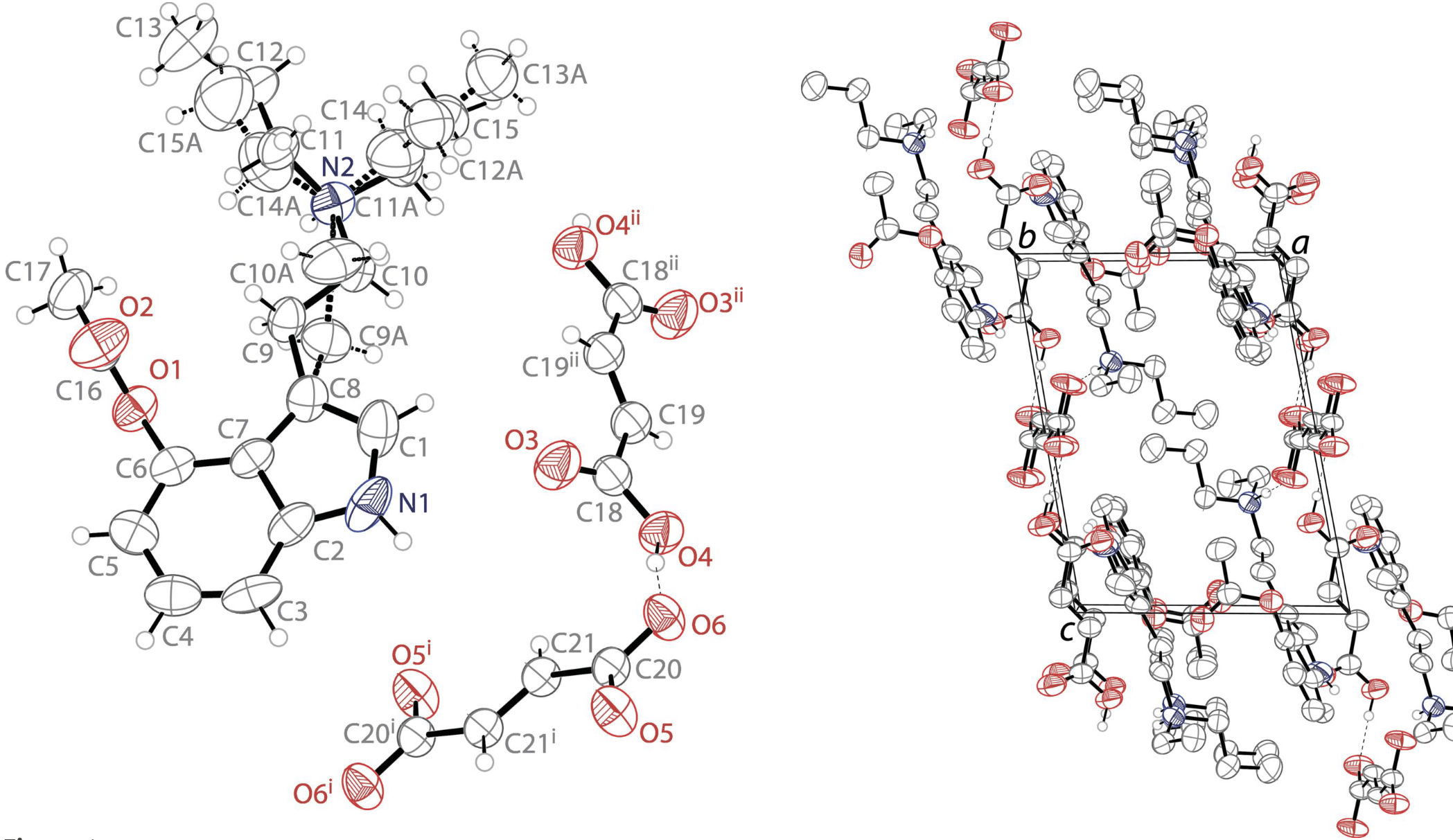
CaaMTech’s most recent publication, in collaboration with scientists from the Manke Lab at UMass Dartmouth and Dr. Nathan Sackett of the University of Washington Department of Psychiatry & Behavioral Sciences Center for Novel Therapeutics in Addiction Psychiatry (NTAP), “Bis(4-acetoxy-N-ethyl-N–n-propyltryptammonium) fumarate–fumaric acid (1/1)” exemplifies the team’s longstanding leadership in the field of tryptamine chemistry. Since 2019, CaaMTech has demonstrated its commitment to accurate tryptamine characterization, novel tryptamine prodrugs, and the structure-activity relationships (SARs) of tryptamines. CaaMTech has collaborated with a diverse group of academic scientists for this research and has published many of its findings in peer-reviewed scientific journals.
Psilocybin, a natural product involved in over 100 clinical trials, has received a tremendous amount of attention for its potential to treat numerous intractable health conditions. But psilocybin is not optimized for clinical applications, and recent research has elucidated several drawbacks. By studying multiple analogous tryptamines, scientists can design new molecules that are optimized for development as therapeutic agents.
Like psilocybin (4-PO-DMT), 4-AcO-EPT fumarate fumaric acid is a 4-substituted dialkyl tryptamine. But the compound differs in two important ways: the dimethyltryptamine (DMT) group of psilocybin has been replaced with an ethylpropyltryptamine (EPT) group, and the phosphoryloxy (PO) ester (at the 4 position) of psilocybin has been replaced with an acetoxy (AcO). These structural modifications produce new molecules with unique pharmacology and create opportunities for engineering next-generation drugs.
CaaMTech’s research has demonstrated that when the dimethyltryptamine (DMT) group of psilocybin is been replaced with another group — ethylpropyltryptamine (EPT) in the case of 4-AcO-EPT — the chemical and biological properties of the molecule are substantially modified. Further, modifying the psilocybin’s ester (from 4-phosphoryloxy) dramatically changes the rate of in vitro and in vivo hydrolysis to the analogous 4-hydroxy compound. For example, changing the 4-phosphoryloxy of psilocybin to a 4-AcO group to make psilacetin markedly increases the in vivo rate of conversion to 4-HO-DMT (psilocin), its psychoactive metabolite.
“This paper highlights our expertise designing new tryptamine prodrugs,” explained Dr. Andrew Chadeayne, CaaMTech CEO. “It also showcases our multidisciplinary team of scientists, ranging from crystallographers to clinical psychiatrists.”
Finally, the paper once again highlights CaaMTech’s contribution to fundamental science through accurate chemical characterization. The crystallographic characterization of 4-AcO-EPT fumarate fumaric acid, a fumarate salt that is also a fumaric acid adduct, exemplifies the importance of fundamental chemical characterization for downstream research. Prior to CaaMTech’s discovery of this class of tryptamine, such compounds were routinely mischaracterized as hydrofumarates. This fundamental error propagated to all subsequent research, compromising all downstream data. CaaMTech continues to lead the way in all matters of tryptamine chemistry.